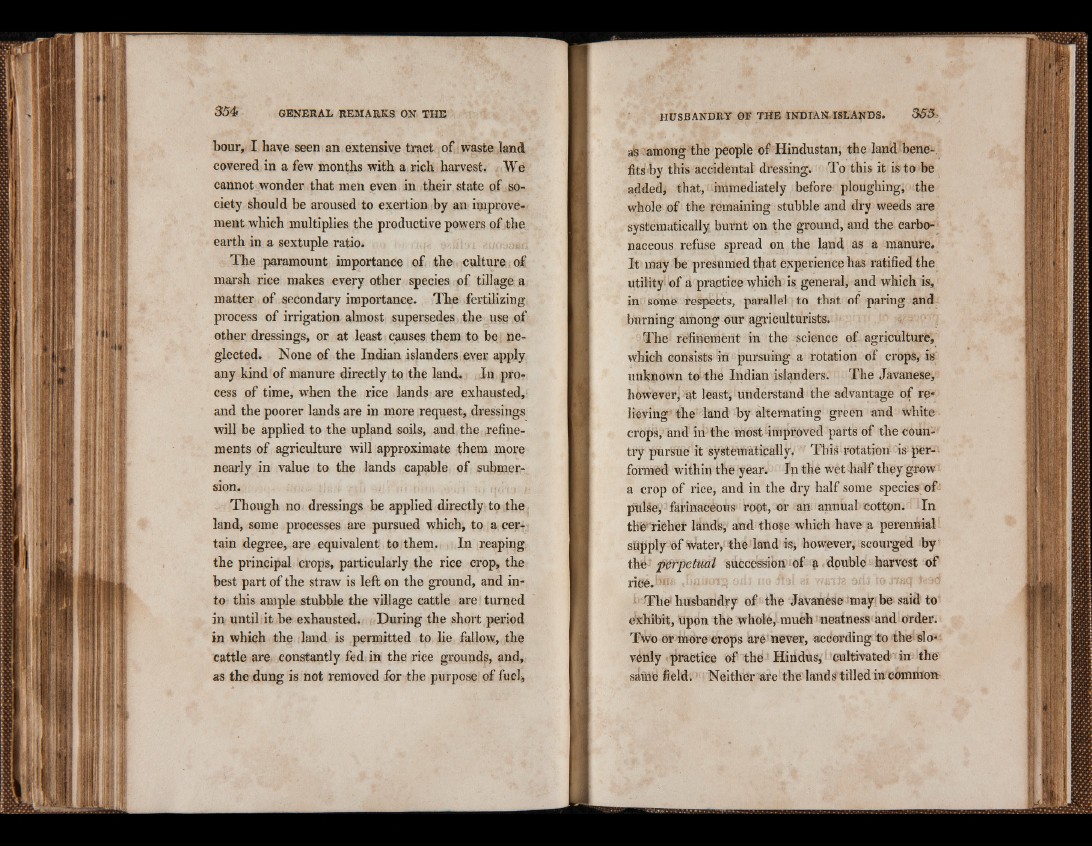
bour, Ihave seen an extensive tract of waste land
covered in a few months with a rich harvest. We
cannot wonder that men even in their state of society
should be aroused to exertion by an improvement
which multiplies the productive powers of the
earth in a sextuple ratio.
The paramount importance of the culture of
marsh rice makes every other species of tillage a
matter of secondary importance. The fertilizing
process of irrigation almost supersedes the use of
other dressings, or at least causes them to be neglected.
None of the Indian islanders ever apply
any kind of manure directly to the land. In process
of time, when the rice lands are exhausted,
and the poorer lands are in more request, dressings
will be applied to the upland soils, and the .refinements
of agriculture will approximate them more
nearly in value to the lands capable of submersion.
Though no dressings be applied directly to the
land, some processes are pursued which, to a certain
degree, are equivalent to them. In reaping
the principal crops, particularly the rice crop, the
best part of the straw is left on the ground, and into
this ample stubble the village cattle are turned
in until it be exhausted. During the short period
in which the land is permitted to lie fallow, the
cattle are constantly fed in the rice grounds, and,
as the dung is not removed for the purpose of fuel,
ais among the people of Hindustan, the land benefits
by this accidental dressing. To this it is to be
added, that, immediately before ploughing, the
whole of the remaining stubble and dry weeds are
systematically burnt on the ground, and the carbonaceous
refuse spread on the land as a manure.
It may be presumed that experience has ratified the
utility of a practice which is general, and which is,
in some respects, parallel to that of paring and
burning among our agriculturists.
The refinement in the science of agriculture,
which consists in pursuing a rotation of crops, is
unknown to the Indian islanders. The Javanese,
however, at least, understand the advantage of relieving
the land by alternating green and white
crops, and in the most Improved parts of the country
pursue it systematically. This rotation is performed
within the year. In thé wot half they grow
a crop of rice, and in the dry half some species of'
pulse, farinaceous root, or an annual cotton. In
the'rieher lands, and those which have a perennial
supply of water, thé land is, however, scourged by
thé perpetual succession of a double harvest of
riee.hm- a
The husbandry of the Javanese may be said to
exhibit, upon the whole, much neatness and order.
Two or more crops are never, according to the slovenly
practice of the Hindus, cultivated in the
same field. Neither are the lands tilled in common